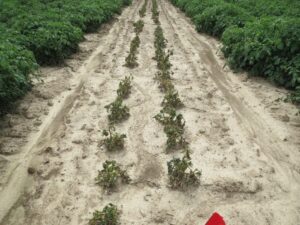Off-target herbicide movement, whether from on-farm or neighboring farms, is not a new problem. However, in recent years it has been on the top of more minds. Although many crops seem to recover from an off-target herbicide event, vegetative recovery does not always imply that all is well.
To illustrate this point, let’s look at the impact of low-doses of dicamba on tomato:
Dicamba is considered a synthetic auxin herbicide. Auxin is naturally occurring in plants and in combination with other plant hormones helps to regulate plant growth, including cell elongation. However, at higher than normal rates auxin can cause uncontrolled cell division and the destruction of vascular tissues which transport water and sugars throughout the plant. At even higher concentrations, auxin can stop cells from dividing and stimulate the production of ethylene. The production of ethylene, “the plant stress hormone”, results in tomato stems that are twisted following dicamba exposure (Figure 1). The bending and twisting of plant stems and petioles in response to ethylene is known as epinasty and typically occurs within days of exposure (Figure 2).
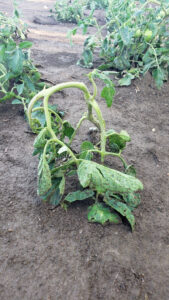
Figure 1. Epinasty (stem and petiole bending or twisting) of tomato 5 days after dicamba exposure (Photo by J. Arana).
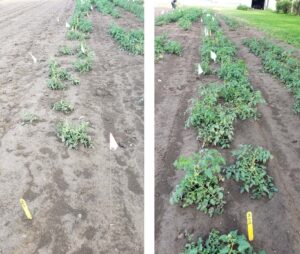
Figure 2. Tomato plants 5 days after exposure to a 1/10X (left) compared a non-treated plot (right) (Photos by J. Arana).
In research trials tomato plants exposed to a 1/10X rate of dicamba looked healthy and similar to non-treated tomato plants one month after exposure (Figures 3a-3c). Despite recovery of vegetative plant parts, tomato yield can be drastically reduced. Tomatoes exposed to a 1/10X rate of dicamba at the early bloom stage had approximately 75% fewer flowers than non-treated control plants (Kruger et al. 2012). Those exposed at an early vegetative stage had approximately 55% fewer flowers than the non-treated control. The reduction of flower number in response to herbicide exposure resulted in a 30% to 70% reduction in tomato fruit yield. Dicamba exposure also delayed tomato fruit maturity and ripening.
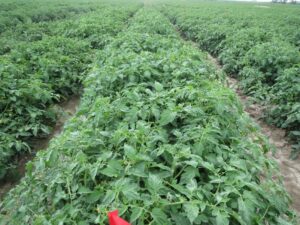
Figure 3b. Tomatoes 1 month after exposure to a 1/10 X rate (10% of the full rate) of dicamba (Photo by SC Weller).
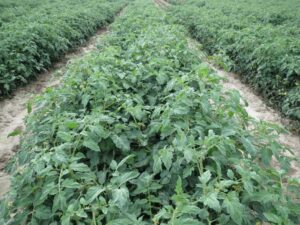
Figure 3c. Tomatoes from an untreated check plot that was not exposed to dicamba (Photo by SC Weller).
The trend in yield reduction is similar among other classes of herbicides as well. In general, the greater the initial visual injury symptoms, the greater the impact on tomato yield.
For more information on herbicide drift risk management in specialty crops, visit the North Central IPM Center https://ipm-drift.cfaes.ohio-state.edu/
Literature Cited:
Kruger, GR, WG Johnson, DJ Doohan, and SC Weller. 2012. Dose response of glyphosate and dicamba on tomato (Lycopersicon esculentum) injury. Weed Technology 26:256-260.
